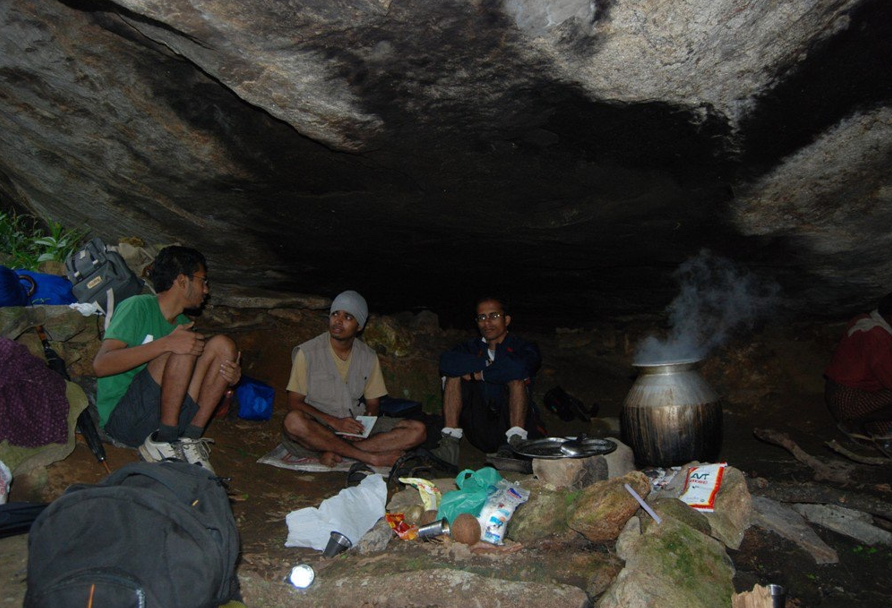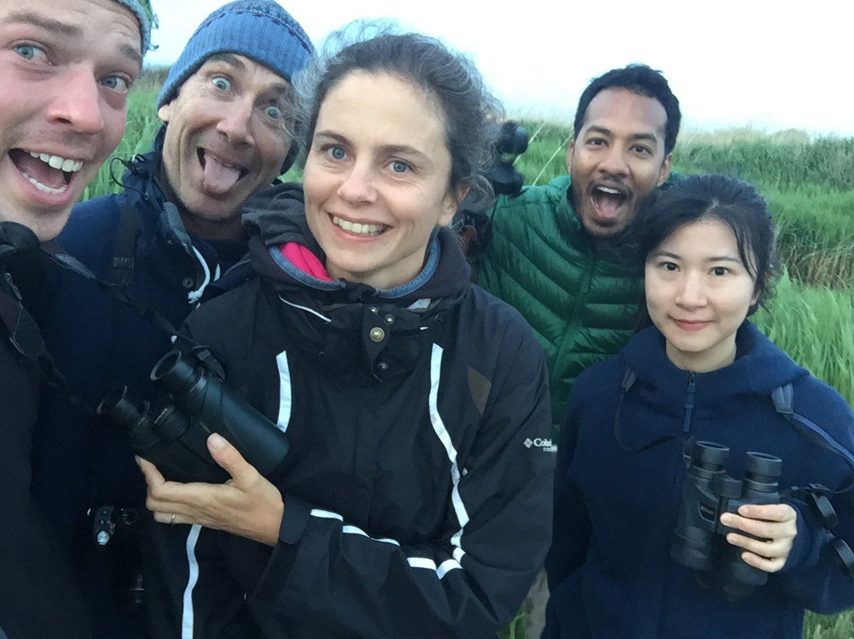Dr Sreekar Rachakonda
CBCS Postdoctoral Fellow
At 18, I couldn’t believe my luck when I landed a zoo internship at the Madras Crocodile Bank – sure, I started off in the library, but I was surrounded by crocodiles!
I dove headfirst into stacks of herpetological journals, devouring everything I could about reptiles and amphibians. Little did I know, this library stint would lay the academic groundwork for my career. While I initially wanted to study animal behaviour, witnessing the rapid destruction of natural habitats up close shifted my focus towards conservation biology.
From canopy to classroom
That shift became more pronounced when I first visited Borneo and witnessed vast tracts of lowland rainforests being converted into oil palm plantations. During my time there, I studied bird behaviour on a hemi-epiphytic fruiting fig tree from a canopy platform. It was a heart-pounding experience, especially being just a few metres away from a Critically Endangered helmeted hornbill. The mornings were alive with the calls
of Bornean gibbons and the raucous laughter of the helmeted hornbills, but what stayed with me most was the sobering thought that the forest I stood in might soon be gone.
During my time in Borneo, I met Professor Rhett Harrison, my first academic advisor, who was not only an expert on figs, but also shared my interest in statistics and conservation biology. Soon I was working with him at the Xishuangbanna Tropical Botanical Garden in China, pursuing my Master’s research.

Image credit: Supplied
Conservation gets complicated
Xishuangbanna – a biodiversity hotspot near Laos, Myanmar and Vietnam – was undergoing rapid transformation. Expanding rubber plantations were fragmenting its rich subtropical rainforests. While I studied the effects of forest fragmentation on local wildlife, I also noticed something else: unsustainable hunting, quietly driving species towards extinction. It soon became clear that simply protecting forests was not enough. There were invisible threats we had to tackle, too. This realisation led me to dive deeper into applied ecology to find innovative conservation solutions.
My growing interest in these approaches led me to connect with Professor Lian Pin Koh, a global expert, who became my PhD advisor at the University of Adelaide. Afterward, I continued working with him at the National University of Singapore. Between stints, I also had the chance to study plant–animal interactions in the temperate forests of Czechia and Japan with Dr Katerina Sam.
Guarding ecosystems from the desk
Until the pandemic, I was primarily a field ecologist. Then COVID-19 hit, and I had to adapt. I transitioned to a spatial conservation biologist, guided by an incredible team at the Centre for Nature- based Climate Solutions in Singapore. Dr Yiwen Zeng helped me master spatial analysis, Dr Aakash Lamba introduced counterfactual approaches and soon- to-be Dr Hoong Chen Teo helped me leverage cloud-based computing tools like the Google Earth Engine. While I miss my days in the field, I have found immense fulfilment contributing directly to global and national policies that impact conservation on a larger scale.
Before joining the Centre for Biodiversity and Conservation Science, I mostly viewed the world through the lens of an ecologist. My focus was squarely on protecting species and ecosystems, without fully considering how industries, markets, and policies shaped the landscape of conservation. That perspective shifted thanks to my CBCS academic advisor Associate Professor Laura Sonter, who introduced me to the complex interplay between businesses, governments and ecosystems. I am now investigating how businesses can assess and disclose their nature-related impacts, a crucial step towards making conservation part of financial decision-making.

Image credit: Jarrod Hodgson
A path in progress
Looking back, my academic journey has taken me to some of the world’s most breathtaking landscapes, from the tranquil woodlands of Toma Komai to the vibrant rainforests of Borneo. Along the way, I have witnessed the damaging impacts of habitat fragmentation and unsustainable hunting. These experiences have motivated me to focus on developing creative, science-based solutions to protect these incredible ecosystems. While I may not be making huge strides to protect our planet, I am working on it alongside my colleagues at the Centre for Biodiversity and Conservation Science – one research paper, field expedition and policy meeting at a time!
To keep up to date on our latest events, check out our Bluesky and LinkedIn.
